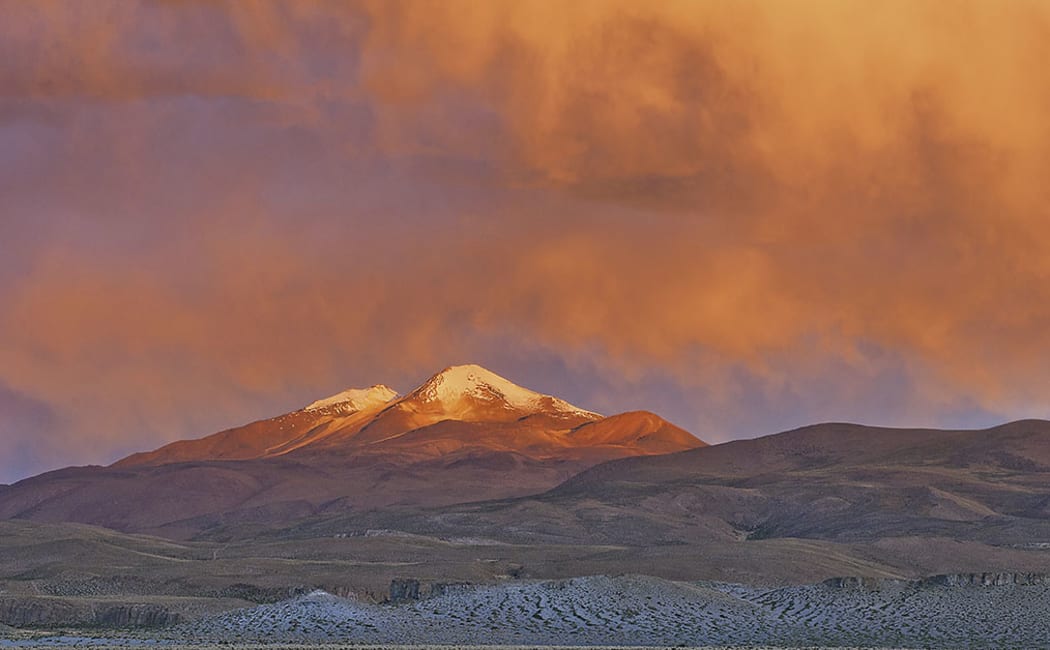Iran’s “Zombie” Volcano Awakens After 710,000 Years of Dormancy

Iran’s “Zombie” Volcano Awakens After 710,000 Years of Dormancy
By Blogentia | Natural Disasters & Earth Science | October 19, 2025 | 8 min read
A startling geological shift has reignited scientific attention on Mount Taftan, a towering stratovolcano in southeastern Iran. Long believed to be extinct, new satellite radar data reveals a subtle but significant uplift of its summit, indicating fresh activity beneath the surface. Experts are calling this a “zombie volcano”—a dormant giant showing signs of reawakening after hundreds of thousands of years.
A Dormant Giant Shows Signs of Life
Between July 2023 and May 2024, satellite radar images revealed that the summit of Taftan volcano had risen by approximately nine centimeters. This seemingly minor shift is, in fact, a powerful sign of underground movement. The research team, led by PhD student Mohammadhossein Mohammadnia and published in Geophysical Research Letters, concluded that this ground inflation ends the assumption that Taftan was extinct. Instead, it may be entering a new phase of geological activity not seen for over 710,000 years.
Located near Iran’s border with Pakistan, Mount Taftan stands 3,940 meters tall. Its twin summits are known for continuously releasing water vapor, carbon dioxide, hydrogen sulfide, hydrogen fluoride, and roughly 20 tonnes of sulfur dioxide daily. This outgassing activity had been largely overlooked, but in 2023, residents of nearby Khash, around 50 kilometers away, noticed something different — the familiar rotten-egg smell grew stronger, and small puffs of ash and smoke became visible in early 2024.
Pressure Building Beneath the Surface
The research team believes the inflation is due to changes in gas permeability or unseen magmatic inflows. Their models suggest the pressure source lies between 490 and 630 meters below the volcano’s summit—far shallower than the primary magma chamber located more than 3.5 kilometers underground.
Rainfall and regional earthquakes were ruled out as triggers. Instead, scientists identified steady internal pressurization as the cause, with deformation occurring on both flanks of the volcano. This combination of gas emissions, shallow pressure buildup, and ground uplift suggests Taftan is no longer geologically silent.
“Zombie Volcano” — What It Really Means
Volcanologist Pablo González referred to Taftan as a “zombie volcano”, meaning it’s not fully extinct but rather in a dormant state that can awaken unexpectedly. “There’s no sign of an eruption coming soon, but the data showed clear movement beneath the surface and new pressure building below the rock,” González explained. “At some point, it will have to release this pressure—either violently or gently.”
This terminology doesn’t mean an eruption is imminent, but it signals that volcanic unrest is taking place. Dormant volcanoes can remain quiet for centuries, sometimes even millennia, before releasing built-up energy. Understanding these warning signs allows scientists to improve eruption forecasting and disaster preparedness.
A Region with Limited Monitoring
One of the biggest challenges facing scientists is the lack of permanent volcano monitoring infrastructure in the region. Southeastern Iran’s Makran mountain range is known for its rugged terrain, cross-border smuggling routes, and insurgent activity, making on-site research and equipment installation extremely difficult.
Currently, Taftan lacks basic monitoring tools such as GPS receivers and seismometers, forcing researchers to rely on satellite imagery and occasional field visits for gas sampling. These limitations make it harder to track subtle changes in real time, which could be crucial in detecting early warning signs of a potential eruption.
Call for Action: Monitoring & Preparedness
The research team strongly recommends that Iranian authorities establish a dedicated monitoring network around Taftan volcano. This includes installing seismic sensors, ground deformation instruments, and gas detection stations. Such infrastructure would provide continuous data, enabling scientists to assess activity levels more accurately and give early warnings to nearby communities.
Additionally, experts emphasize the importance of updating hazard maps and implementing mitigation strategies. While an eruption may not be imminent, preparedness can significantly reduce risks to human life and infrastructure if activity escalates.
Why This Discovery Matters
The awakening of Taftan volcano underscores the importance of **volcanic monitoring in regions once considered geologically quiet**. Dormant volcanoes like Taftan can store immense amounts of pressure for thousands of years, and even minor geological shifts can be early indicators of future events.
Trending search terms like “Iran volcano news,” “zombie volcano Taftan,” “volcanic activity in the Middle East,” “volcano eruption risk,” and “dormant volcano monitoring” reflect growing global curiosity. The region isn’t typically associated with major volcanic activity, which makes this discovery especially significant for geologists and disaster planners alike.
What Happens Next?
While there’s no immediate threat of eruption, scientists will be watching Taftan closely in the coming months and years. If the pressure continues to build, the volcano may release energy through gas emissions, ground fractures, or minor eruptions. Alternatively, the pressure could subside gradually without any dramatic events.
The key, experts say, is consistent monitoring and transparent communication with local communities. Preparedness, not panic, is the message. Taftan’s new classification as a dormant volcano rather than an extinct one is a wake-up call to strengthen environmental observation across Iran’s volcanic regions.
Final Thoughts
The reawakening of Iran’s Taftan volcano is a powerful reminder that Earth’s forces remain active, even in places long believed to be at rest. While the world’s attention often focuses on well-known volcanic regions, this “zombie volcano” is proof that geological surprises can emerge anywhere.
By investing in early warning systems, scientific monitoring, and community preparedness, Iran can turn this discovery into an opportunity for resilience. Whether Taftan remains quiet or eventually erupts, understanding its behavior will be key to keeping nearby populations safe.
